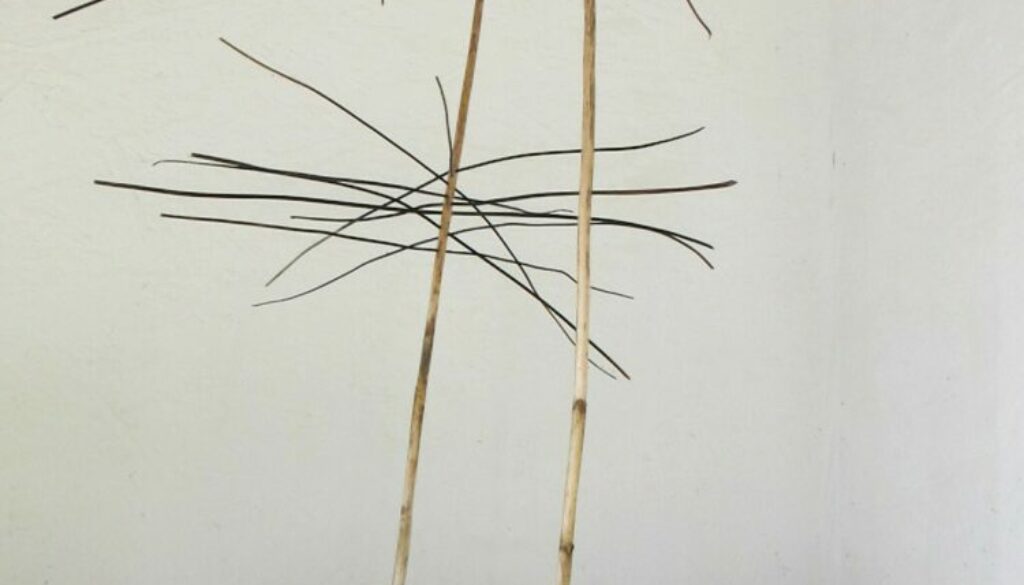Out of the Ground – Sculpture Show at Inverness Botanical Gardens
Now open a visually stimulating show of sculptures all made from materials that are found in nature and as such are ‘out of the ground’. Ranging from large branches or limbs of trees to such common place plants as plantain (in total from four different trees and a further 5-6 plants), and also kelp although not strictly a plant. Artist Nigel Goldie has produced a range of sculptures that are at times immersive, puzzling and challenging of conventional views of these materials from’ out of the ground’. The larger and more robust sculptures are already in the grounds of the gardens, the further varied and fragile sculptures have been installed in the new large glasshouse. The show will be open to the public during the garden opening times of 9.30 am to 3.45pm throughout the week until the 17th September
Further information from www.nigelgoldie.com
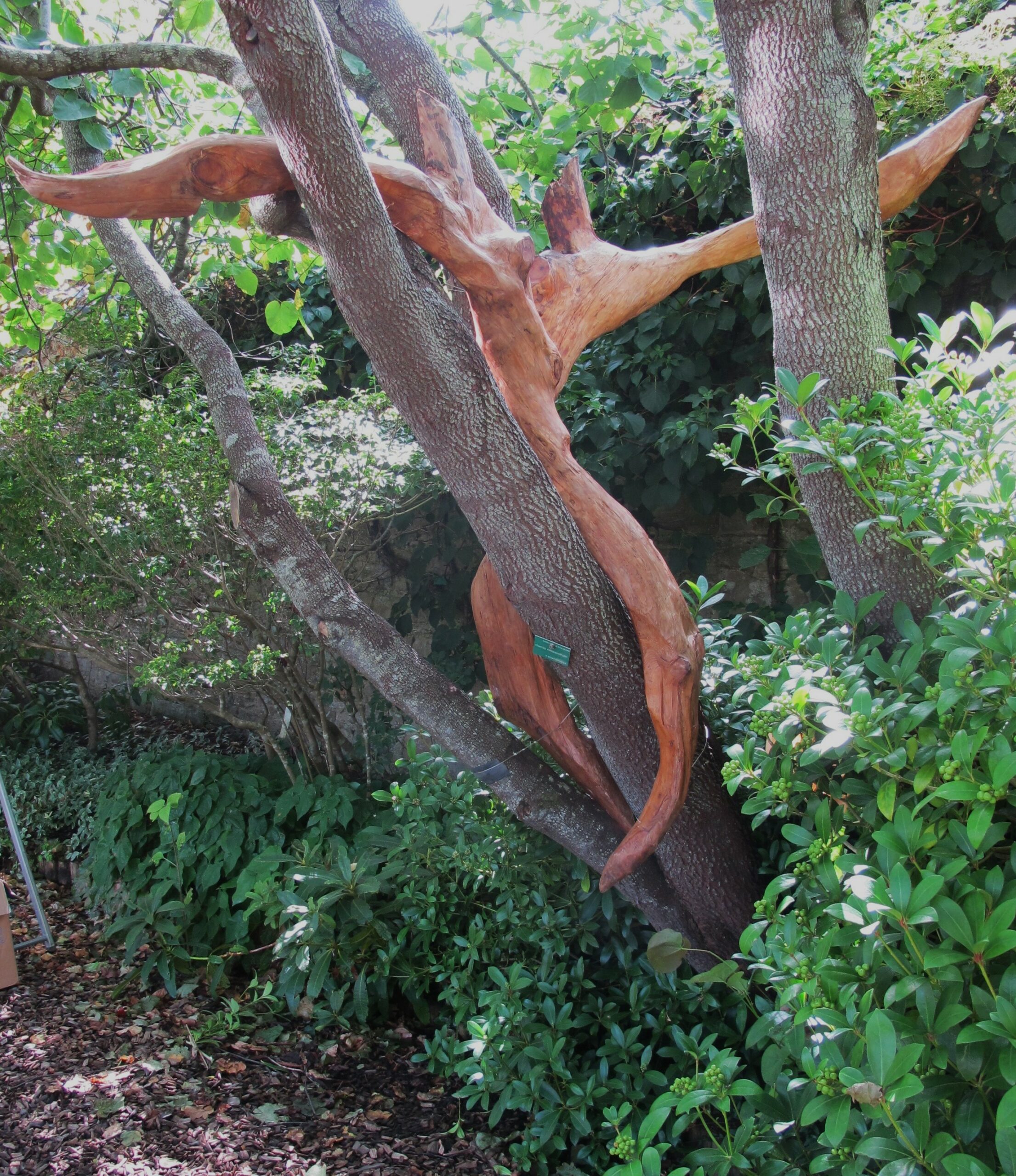
‘Twogether‘ is another of my large timber sculptures that reflect initial use of a chain saw to reduce the length of a fallen branch of a scots pine, thereby creating two almost matched halves. Subsequently gouges and chisels were used to create differences of shape reflecting and extentuating its natural form, while also making interventions to make it much more than an ‘interesting’ piece of timber. The two halves have been suspended on swivels so that they can rotate in ‘harmony’ or ‘discord’ according to the wind, but this requires a safe and suitable means of doing this. Consequently will not allowed to be hanging free in ‘Out of the Ground’ and these have been suspended in a fixed way and tempting to rename this as ‘tree huggers’.
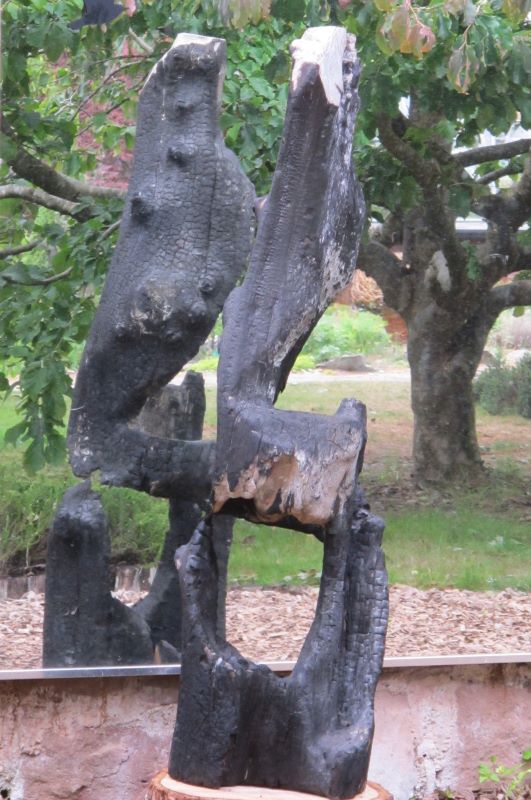
‘Burnt Offering‘ has experienced a number iterations in its life. Started from a whole tree trunk and chain sawn to change its form and open it up, Subsequently carved with hand tools to refine the shape and overall appearance. It stood for a long time unfinished and then while having a fire to burn waste wood, I added this to embers in order to char its exterior surface. This went further than intended but it emerged intact and for some time was outside on display, until strong winds led to it falling over and a section breaking off. However, I have chosen to display this as having some merit in its residual form and the evident breaks that are occuring.
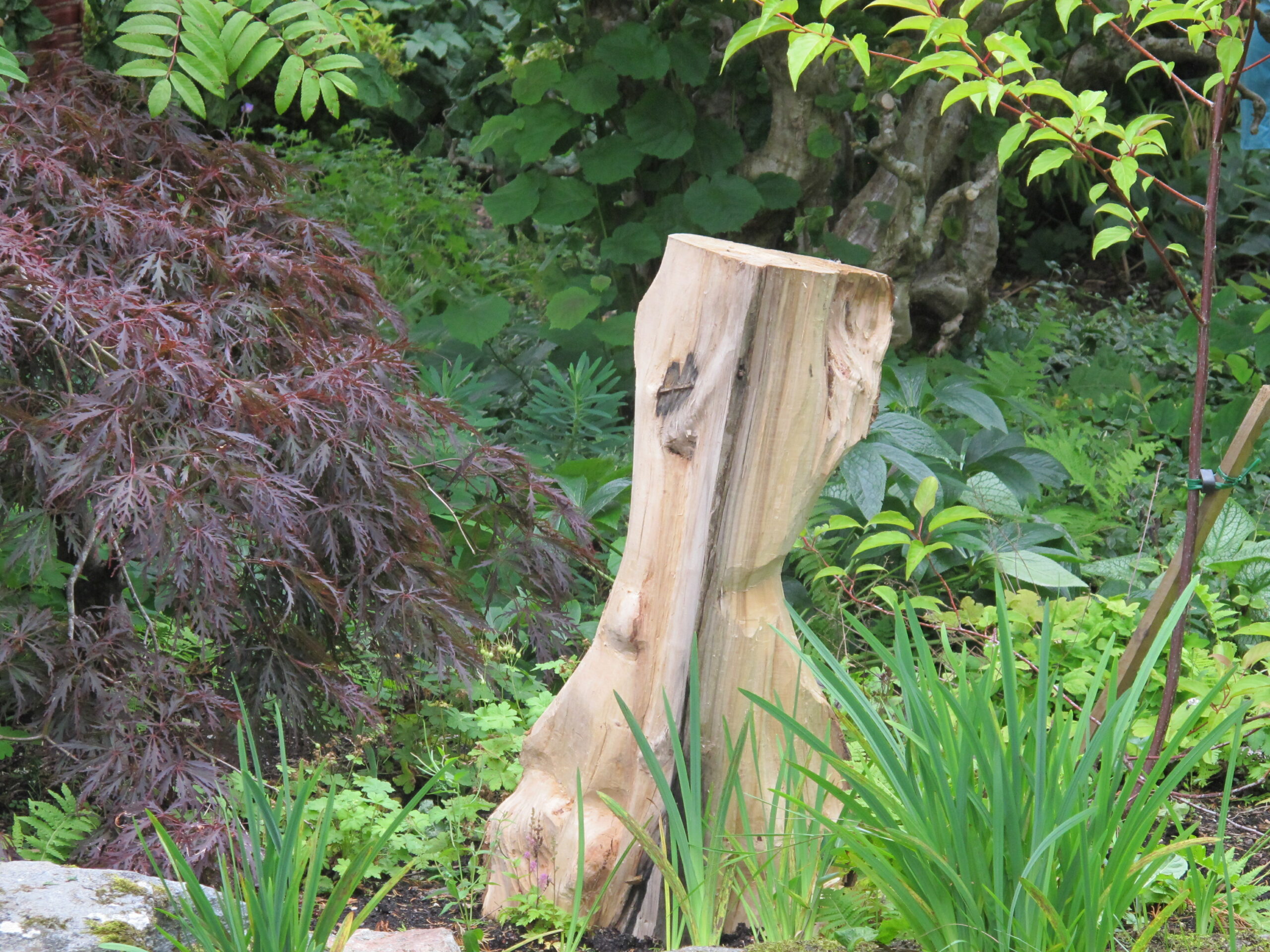
The title ‘Form from a Fencing Post‘ gives a clue to its origins for still protuding from the wood are two ‘ancient’ nails, indicating that the original tree had served as a fencing post long enough ago for all signs of these nails to be covered by the bark. Not sure of the history of this log, as passed on my a friend who had acquired it from someone else. Arguably this is still an unfinished work, but I have chosen to show this as I like this emergent quality of potential without final definition and the evident natural features and those of human intervention in the past.
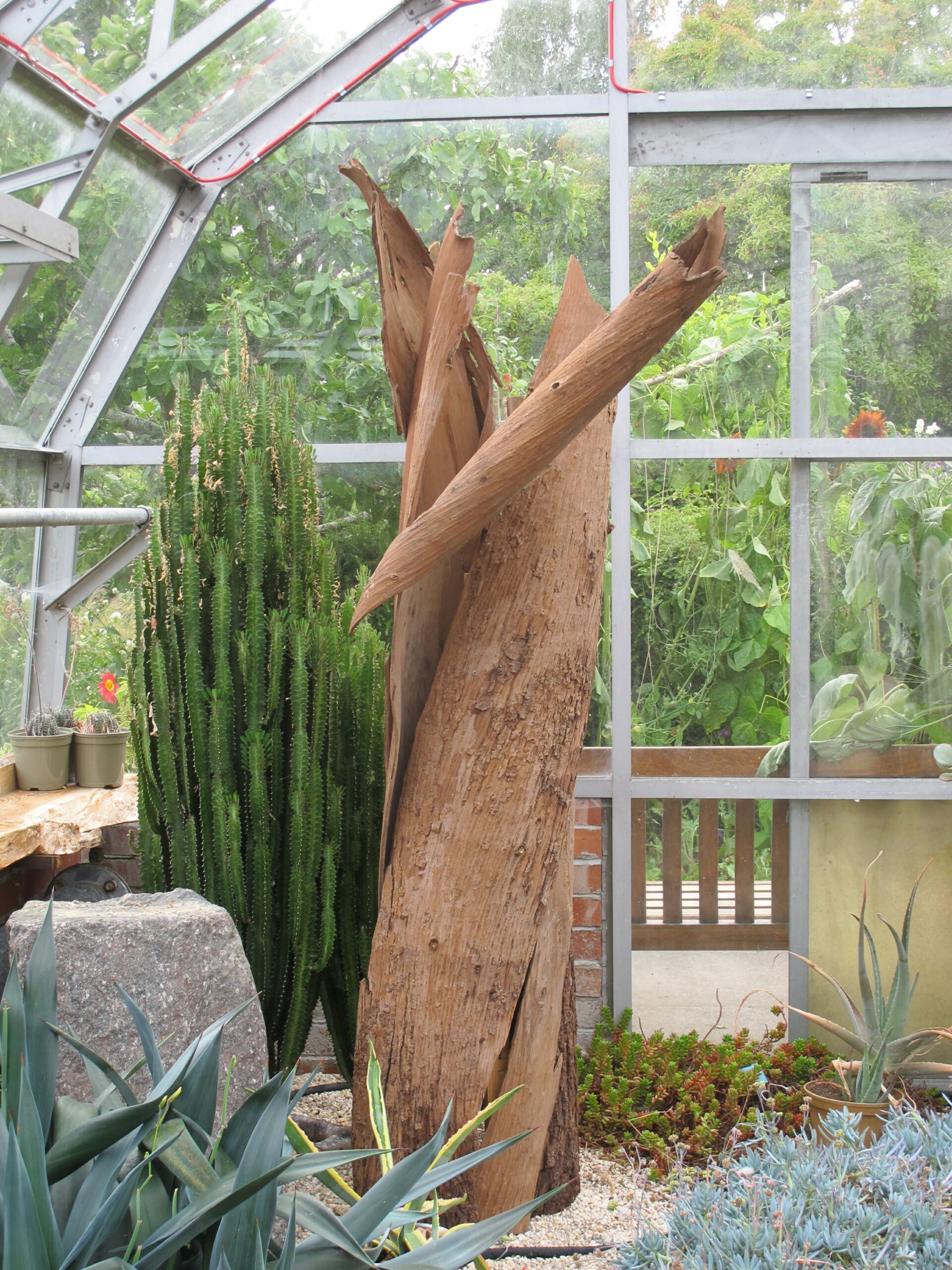
‘Barking mad‘ is the title for this attempt to reconstruct sections of bark that came from an eucalyptus tree in a friend’s garden. This was transported to Assynt over ten years ago and been suspended since then in my studio. Doing this show at IBG has provided the incentive to explore what might be possible. For the only time in this show, I have had recourse to use bought planed timber to create a frame, around which to support and bring the pieces together. One length of the bark had to be reduced to make transporting it possible. The idea to attempt this piece was inspired by David Nash whose amazing range of timber sculpture, from whole and parts of trees, has greatly influenced me.
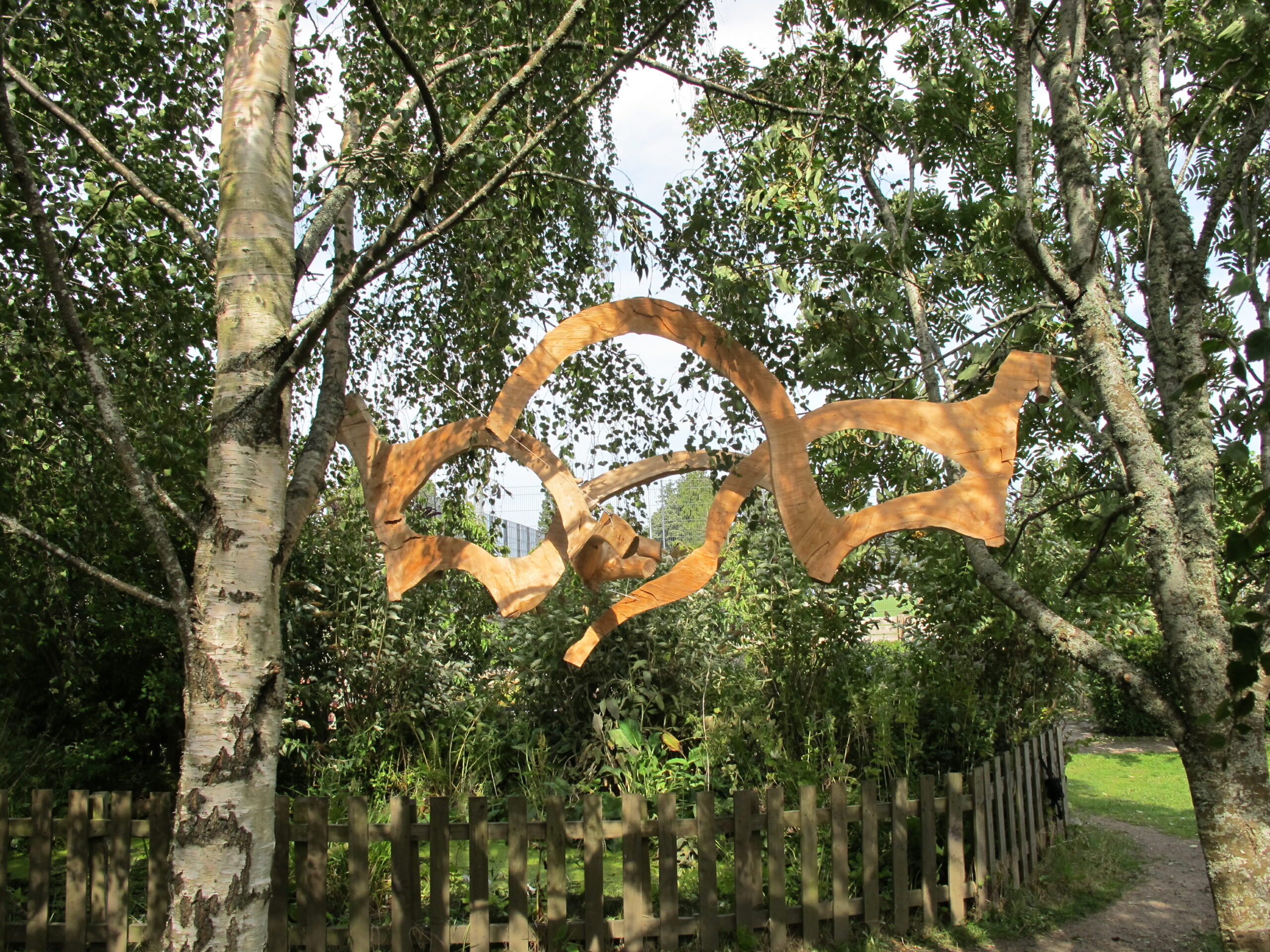
This shows ‘Leylandii limbs‘ on display in the ‘growing area’ at the Botanical Gardens. This is a work that benefits from interacting with its environment and also from being suspended and thereby can be viewed from all directions. Like many other sculptures on show its inherent and varied meanings can be manipulated by changing how it is arranged. In this instance in the Botanic Gardens it is secured in a fixed arrangement.
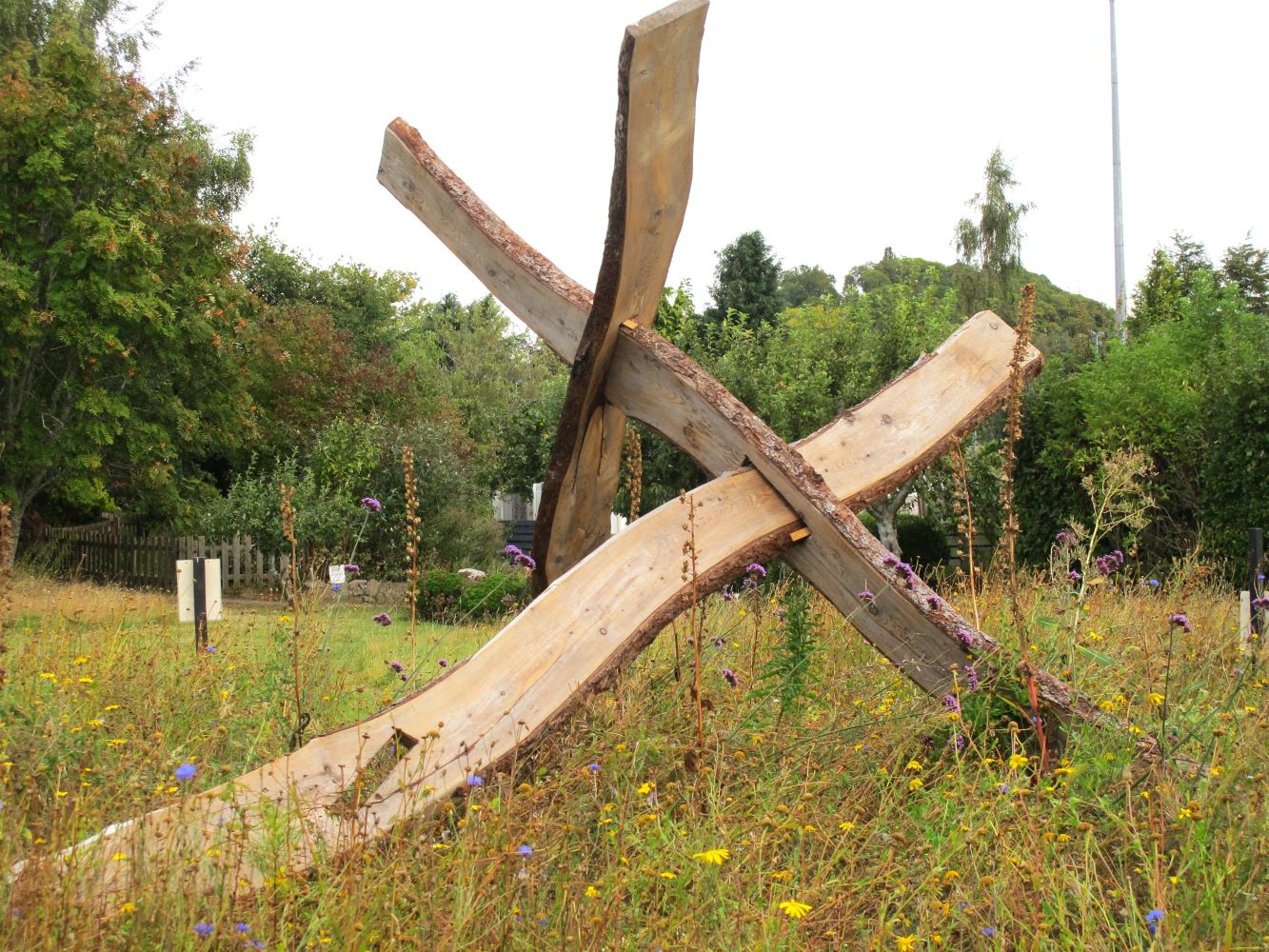
Fallen
While project managing the construction of an art studio at Glencanisp Lodge using timber felled for this purpose, my attention was drawn to larch tree trunk with defined curvature. The view was that this was of little use for building purposes and I asked that it be milled into a planks for potential alternative uses (for example benches). After sometime, the idea of interlocking the 3M long 5cm thick planks to make a sculpture emerged and this was what I arrived at. Working on my own with limited means of lifting meant working within the limits of what I could achieve. The title comes from a reflection on the widespread devastation of wood land at Glencanisp from windblown trees becoming entangled with one another.
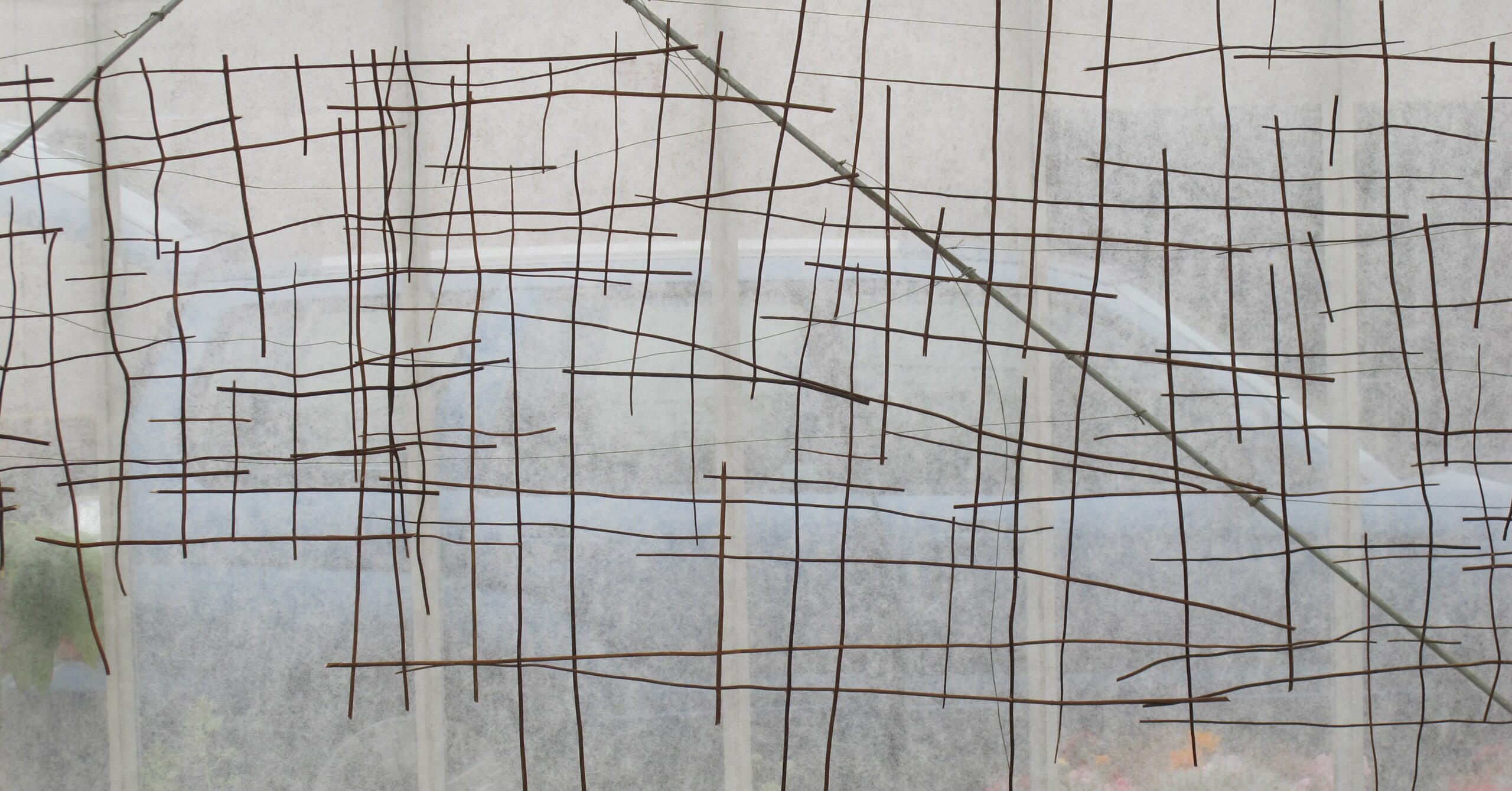
Frieze maybe not what this and was intended to be a larger screen, to separate the art from the rest of the space. Be that as it may, this is a good starting for the very different work in the glasshouse to that in the gardens. By contrast with the solidity of the outdoor sculptures these are mainly flimsy made with thin stalks or other plant material. Two key points to make, firstly these are ‘open’ structures that define/shape the space within and between the sculptures and secondly to note that ‘frieze’ illustrates the one dimensional ways of viewing by contrast with what follows.
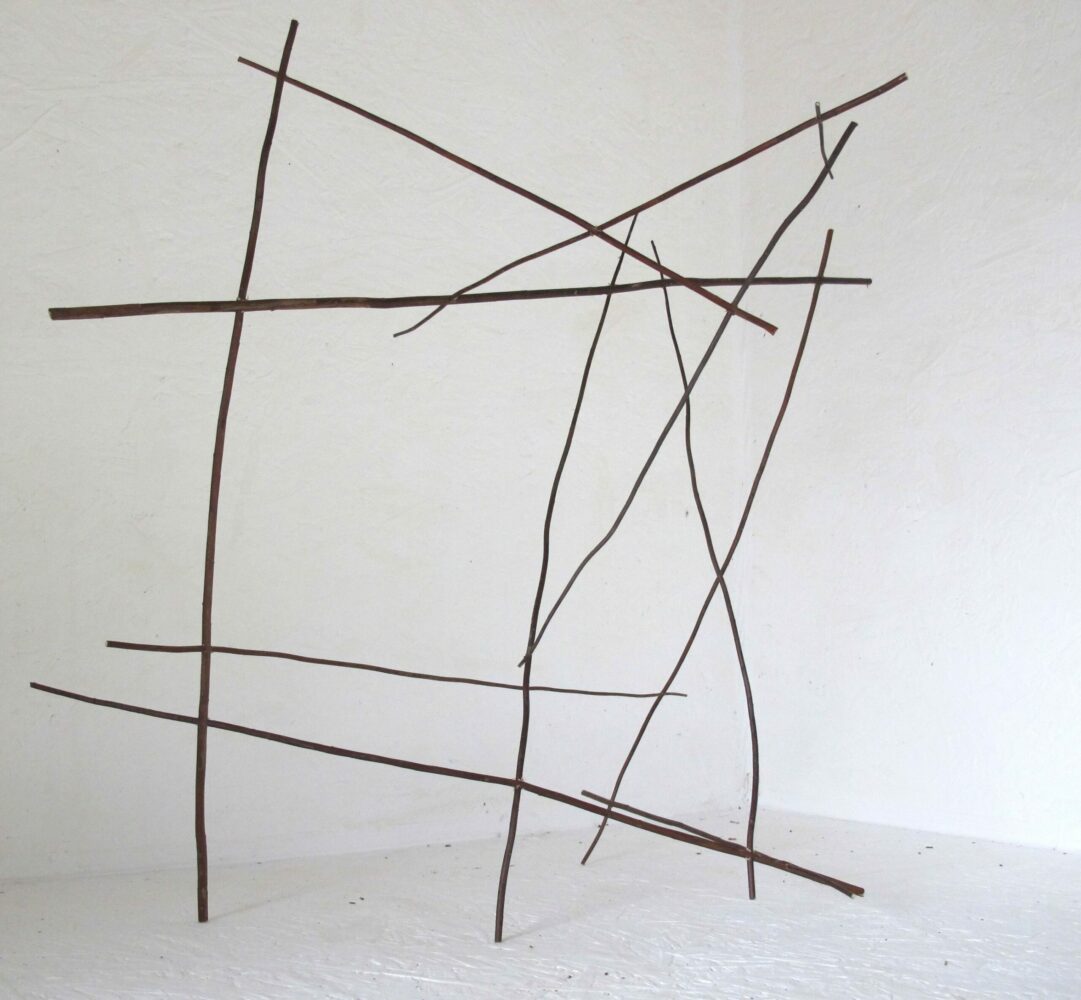
The first sculptures to the side of the hanging ones are static and hence not so easy to see the changing shapes and the ways thin goldenrod stems define the spaces. Ideally these could be handled so as to explore what is occuring within the spaces created by the means of construction, but their fragility does not allow for this within this venue
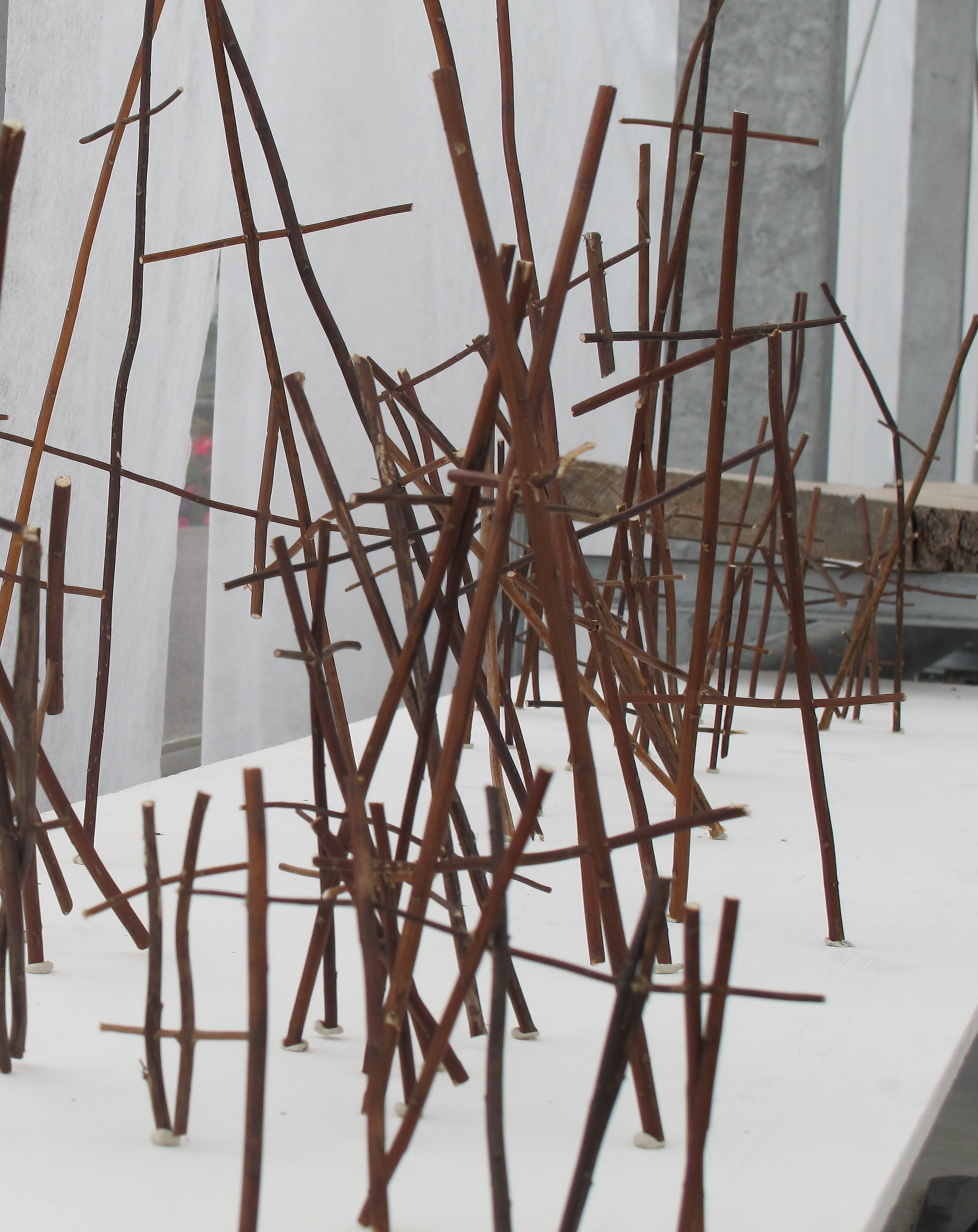
Nothing left depicts the condition of the thousands with ‘nothing left’ be it in Gaza, Sudan, Somalia and many other places experiencing human made or climate disasters. I have a long association with ‘stick people’ and year’s ago as a lecturer draw them frequently when illustrating social and human behaviour. I find power in the minimalism of a few lines, or as in this case the combining of 3-4 stalks of goldenrod to represent human action/movement.
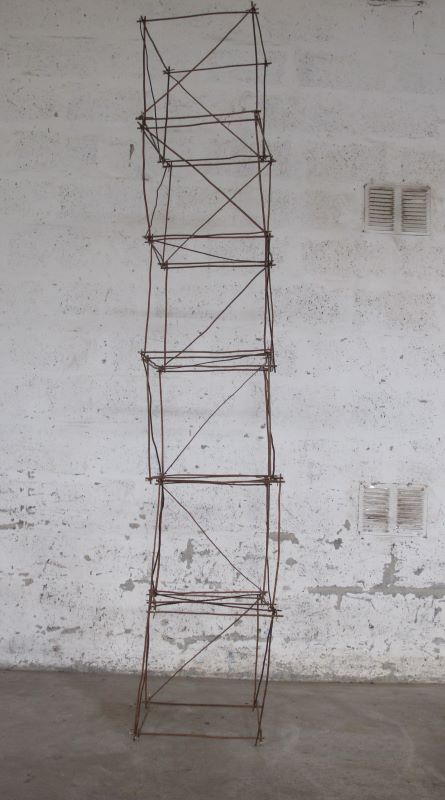
Trump Tower of nothingness
This is one of several works constructed entirely with stems of goldenrod by a combining by doweling or jointing together . Previously I have made similar boxes that were suspended with small kelp sculptures ‘falling’ within them and displayed as part of the Isle Martin seaweed festival in 2022.
I was tempted to call these ‘Boxes of nothingness’ and display them separately suspended in the air. The practical issues of doing this in the glasshouse led me to think of an alternative. This is also part of my interest in exploring form and space within this show.
The idea to make an open boxes with the thinnest of materials, developed from an earlier much larger tower made from 1M cubes of rylock fencing wire. The idea for this was inspired from working with archaeologists restoring Clachtoll broch in 2012. This reached a height of 6M and stayed upright for almost three weeks before strong winds caused its demise.
How long this will remain erect remains to be seen and this attempt to define and ‘enclose’ negative space may well be a futile endeavour. The big challenge here is the heat inside the building and consequent drying out and loosening of the joints.
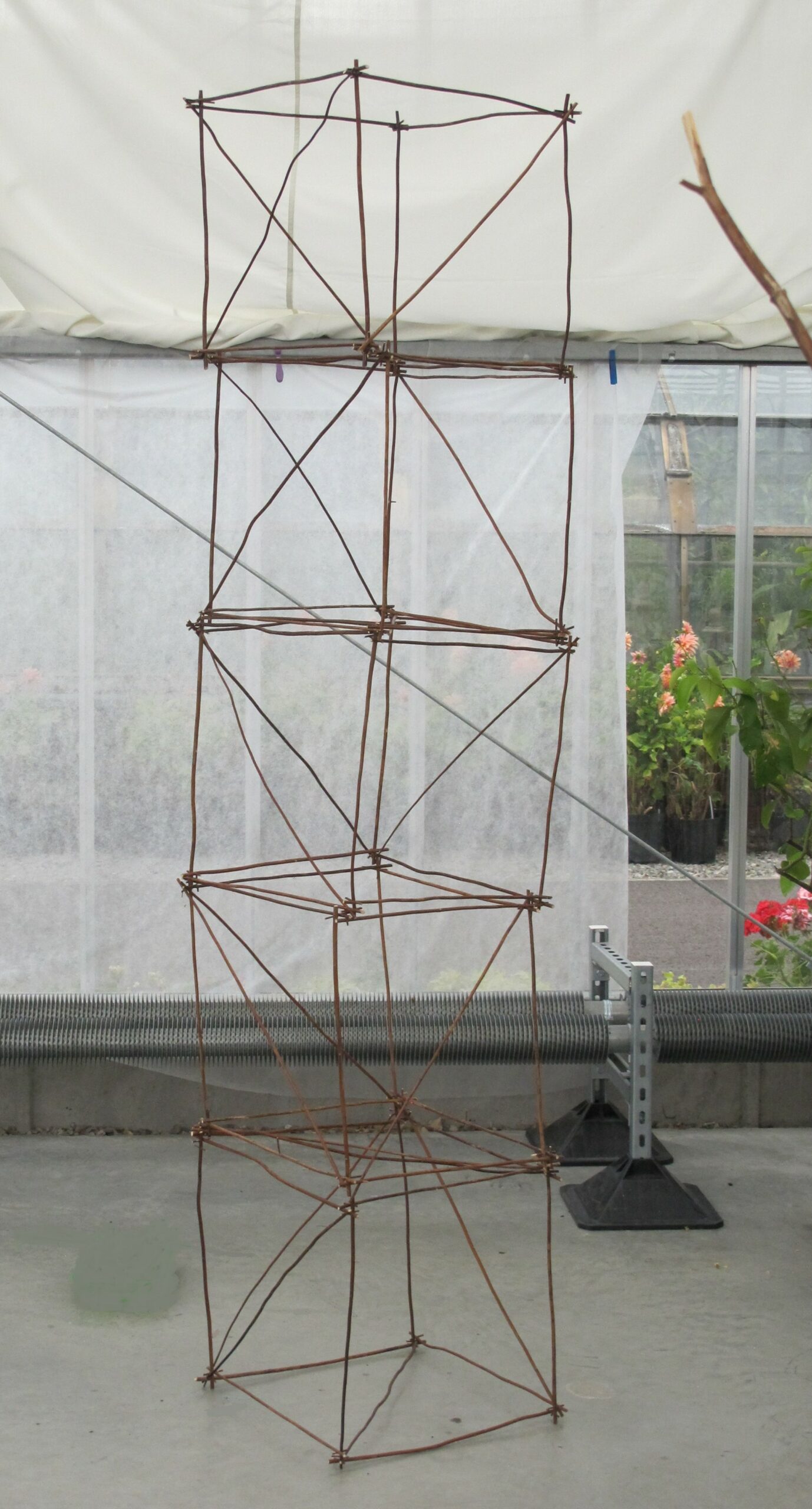
Trump Tower in the glasshouse standing one ‘box’ lower than in previous image – a consequence of the drying heat within the building. I am sure viewer will have their own thoughts on the meanings of this name and form.
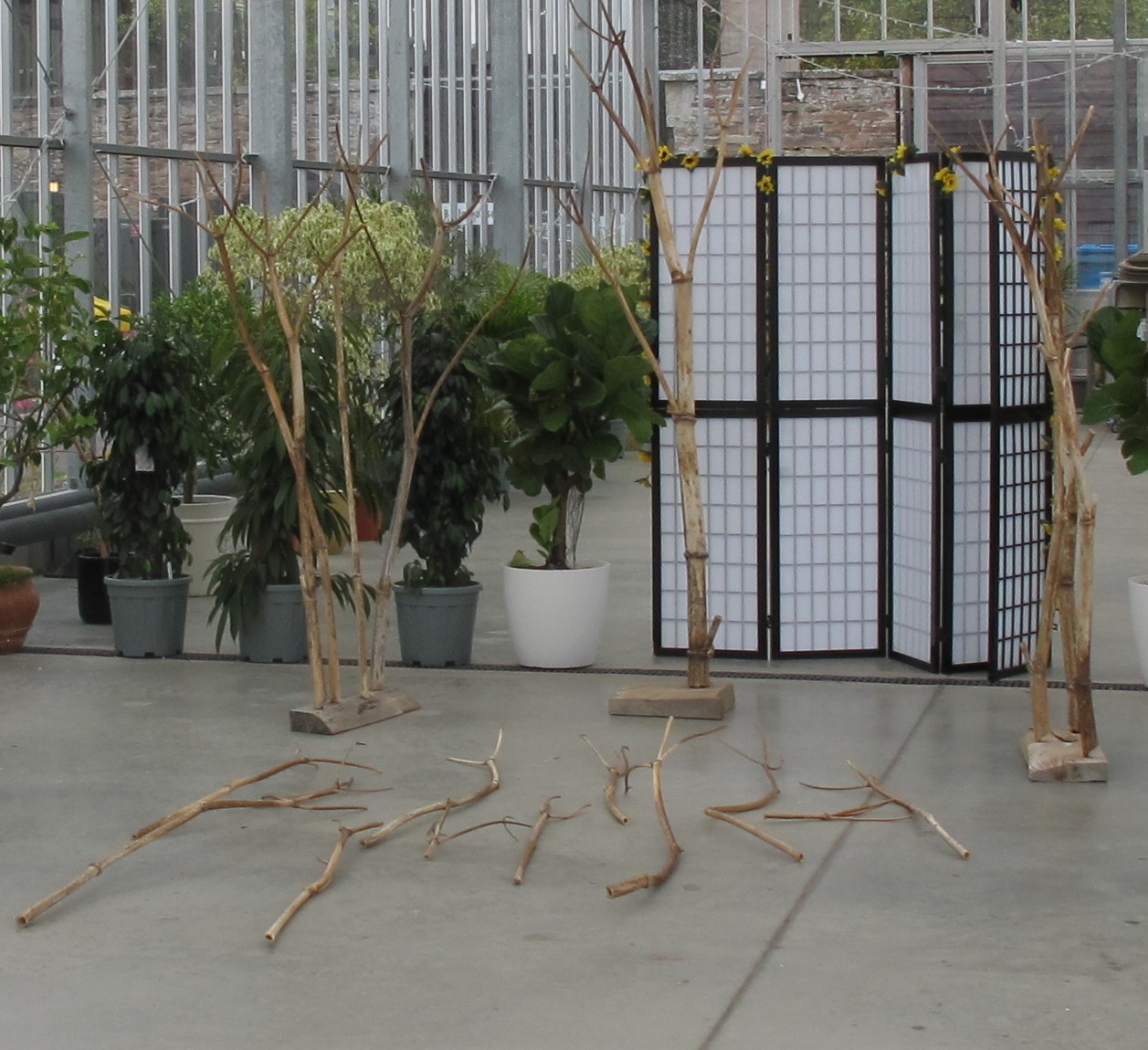
Angels in Turmoil is the outcome of having access a cut down angelica plant from the Botanic Garden almost a year ago. It has taken other forms since then but it appropriate to further explore it further. It is not by chance it is next to Trump Tower as the raising of arms, the evangelical postures and the prostrating angels on the floor are a reflection of current events.
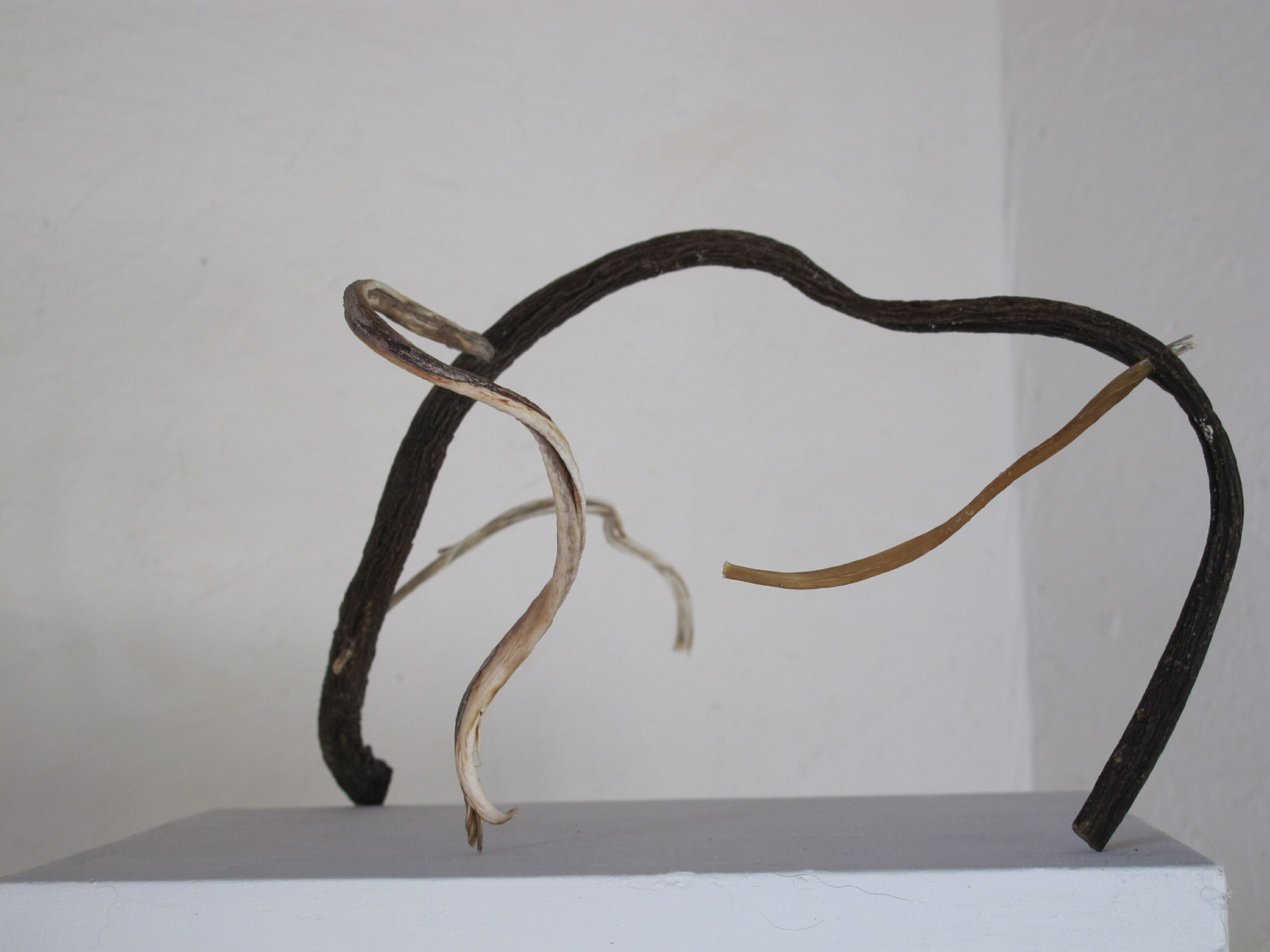
Small kelp sculptures this is one image from a potential of seven others to illustrate how use of this material provides the means to similar but different small scupltures. The very shapes the kelp can be cut to providing the means for more expressive sculptures that again can often be displayed in multiple ways thereby changing the meaning of the actions thereby created. Combining them together opens up another range of potential intepretations.
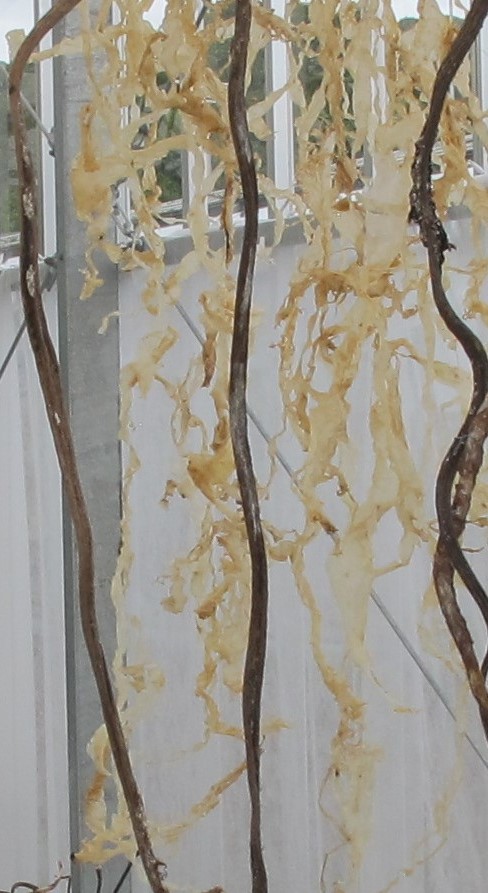
Kelp forest This image is a detail of the hanging kelp provided as a context to showing the small kelp sculptures. Kelp is a remarkable ‘plant’ that grow profusely along much of the coastline of Scotland and especially the North West. It has much historical significance with crofting and more recently there are proposals to farm and harvest it for the numerous by products that can be made from it. It can be seen as undesirable from a tourist point of view but when dried, it reduces and shrivels to become hard and an interesting (if challenging) material to create sculptures with. One issue being the way it continues to respond to outside climate conditions and can become floppy and changes its form – a challenge for sculpture.
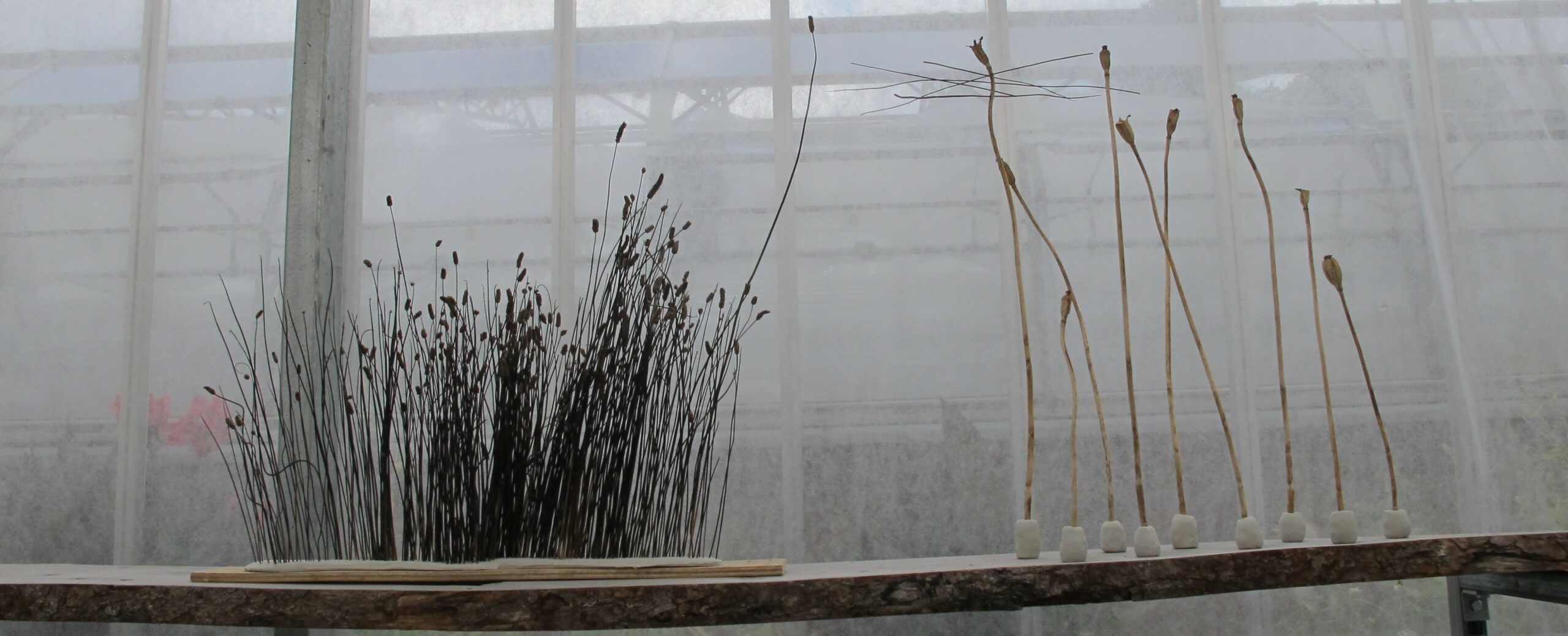
Plantain’s revolt is playing with the idea of plants such as plantain commonly dismissed as being invasive and of no interest to gardeners, organise themselves and take action against the proud and superior much cherished plants such as tulips. The haughty and aristocratic posing of the tulip stems inviting this action by the lowly plantain
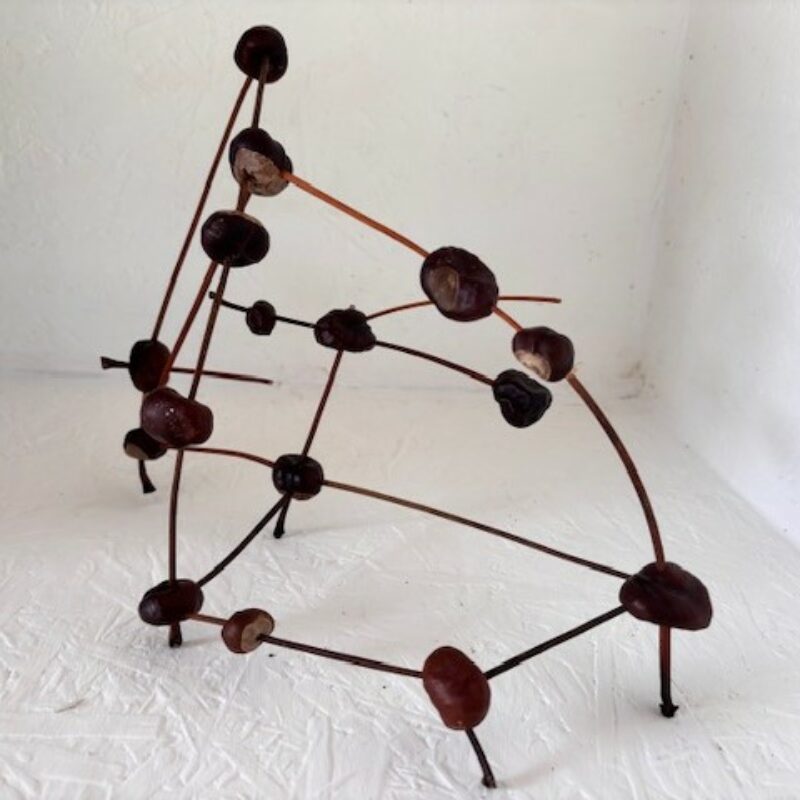
. ‘Conkers in space’ reflects my habit of still collecting conkers every autumn enjoying having some on display and then ending up in a box. So many of these used in this sculpture are many years old yet still shiny and hard. I would have liked to have suspended this and am still hoping once setting up in the large glasshouse that this might be possible.Sculpture provides the opportunity for adults to play at how to construct objects from a wide range of materials
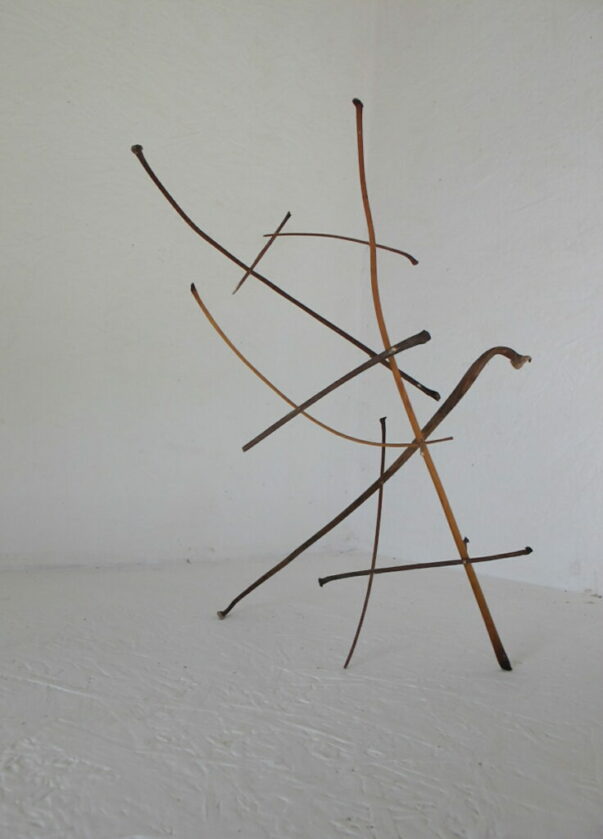
Exploring space and form is one of several small sculptures on display that have developed over time, as I have experimented with different stalks/petioles of different trees and plants. In this example horse chestnut stalks. Ideally the viewer should directly explore these sculptures that open up forms of negative space created by the sculpture, by changing the position and how these can generally stand in several different ways. But within the limitations of show such as this with no supervision and also the inherent vulnerability of the work, this is not possible.
